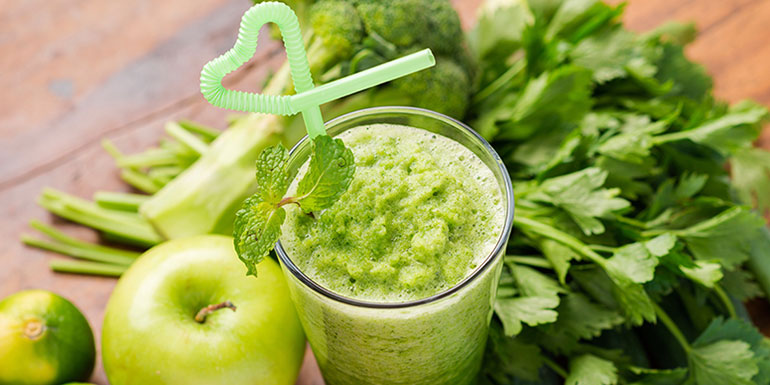
Fruits, Veggies Flavor Specialty Drinks
Beverage trends present opportunities for specialty drinks

Fruity infusions and vegetable add-ins are cropping up on specialty drink menus as consumers seek new flavors and more functionality from their beverages.
While the flavors of fruits — especially tropical varieties — are finding their way into more specialty teas and lemonades, vegetables such as spinach and kale are being blended into fresh-pressed juices and smoothies.
"We're seeing more fresh-pressed juices that include less fruits and more vegetables to achieve higher functionality, and certainly higher price points," says Darren Tristano, executive vice president at foodservice consulting firm Technomic Inc.
In fact, the incidence of greens being mentioned on non-alcoholic beverage menus has risen 133 percent since 2010, according to a May 2015 beverage trends report from research firm Datassential.
Even the coffee-café segment is piling on the produce bandwagon. Verve Coffee Roasters in Los Angeles, for example, offers an espresso blended with cold-pressed carrot-pineapple juice.
Restaurant operators can navigate the evolving flavor-and-ingredient landscape for specialty beverages with the help of Coca-Cola's Recipe Box, a database of drink recipes that allows users to search based on ingredients, menu pairings and other factors, says Thays Morgan , senior manager for strategy, planning and development for the full-service restaurant channel at Coca-Cola.
While the Recipe Box offers a turnkey solution for operators, they also can work with several of Coca-Cola's culinary partners, such as Food IQ, Virginia Willis, and Donna Shields, to develop a custom specialty beverage menu or create their own signature drink.
"We have had national chains and large regional chains work with our culinary partners to create signature beverages," Morgan says. "It runs the gamut from lemonades and limeades to smoothies, to even some sparking offerings."
Mainstay Flavors
Specialty beverage items showing the strongest growth include lemonades and limeades, teas, smoothies and specialty carbonated soft drinks, Morgan says. The specific flavors used to create specialty drinks vary by beverage category, but many traditional flavors, such as vanilla, are mainstays, she says, citing research conducted with Mintel for Coca-Cola on specialty-beverage flavor trends.
Ever-popular fruit flavors include cherry and mango, as well as berry flavors such as strawberry, raspberry and blueberry, according to Morgan.
"These flavors have broad reach with guests," she says.
Tristano of Technomic notes that fruit flavors are also appearing on more restaurant beverage menus in the form of "aguas frescas," which often contain tropical fruit flavors such as guava or tamarind. These drinks, popular in various forms in Latin American countries and the Caribbean, also can include grain or flower ingredients, such as chia or hibiscus.
In the soda segment, signature beverages created by athletes — such as the LeBron James Sprite 6 Mix — appear to be catching on, Tristano says. These offerings can be seen as an extension of the trend toward customization that is popular among young consumers, he adds.
"We're seeing more of these signature creations, and athletes creating more flavors," he says.
Coffee and Tea
House-made teas also are becoming a more popular specialty beverage offering at restaurants, according to Tristano.
"There is a lot of room for more quality teas," he says. "Some operators are looking at tea as an alternative to coffee."
Specialty coffee itself doesn't appear to be losing any ground, however, despite an uptick in the popularity of tea. In fact, the majority of coffee now consumed in the United States is specialty coffee, according to Mintel. Leading flavors include caramel, chocolate and cinnamon.
Dessert coffees in particular stand out among specialty coffee drinks, with flavors that include salted caramel, flan and tiramisu popping up on the menus of some of the major coffee chains, Mintel reported in an April blog post on beverage trends.
Sales of nonalcoholic specialty beverages — which include teas, lemonades, limeades, shakes, smoothies and even sparkling sodas and specialty sodas — are projected to grow 16 percent between 2014 and 2017, according to Mintel research provided by Coca-Cola. These products will account for 20 percent-plus of the growth of foodservice beverage growth during the next three to five years.
In addition, the Mintel research shows that 70 percent of consumers are interested in trying new varieties of specialty beverages.
"For many operators, creating a specialty beverage can be as simple as combining three ingredients they already have in house," Morgan says. "It's just a matter of finding the right recipe, with the right products, together with the right presentation."